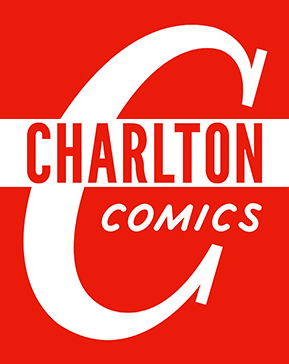
Charlton Comics was an American comic-book publishing company that existed from 1945 to 1986, having begun under a different name: T. W. O. Charles Company, in 1940. It was based in Derby, Connecticut. The comic-book line was a division of Charlton Publications, which published magazines, puzzle books, and briefly, books. It had its own distribution company.

Hippety Hopper is a young kangaroo character in the Warner Bros. Looney Tunes series of cartoons. Robert McKimson introduced Hippety Hopper in Hop, Look and Listen (1948), which established the pattern for future Hippety Hopper cartoons. The character appeared in 14 theatrical cartoons between 1948 and 1964.

Petunia Pig is an animated cartoon character in the Looney Tunes and Merrie Melodies series of cartoons from Warner Bros. She looks much like her significant other, Porky Pig, except that she wears a dress and has pigtailed black hair.

Albedo Anthropomorphics, or Albedo for short, is a furry comic book anthology series which was credited with starting the furry comic book subgenre that featured sophisticated stories with talking animals primarily intended for an adult audience. The first issue of Albedo was published in 1983; the most recent issue was published in 2005.
Cutey Bunny is a cartoon animal superheroine created by Joshua Quagmire for a humorous line of American underground comic books that first appeared through Army Surplus Komikz, which ran sporadically for five issues from 1982 to 1985. She has since appeared through various other comic titles such as Critters from Fantagraphics Books and one-shots such as Cutey Bunny's Pearl Harbor Beach Party from Rip Off Press. As her name suggests, Cutey Bunny's powers and concept are a pastiche of Go Nagai's manga creation, Cutey Honey.

Fission Chicken is a comic book and webcomic character created by John Patrick (J.P.) Morgan (1957–2010). Fission Chicken is a short-tempered superhero chicken with the ability to fly, possesses supernatural strength, bulletproof durability, and can project power bolts from his hands.

Hoppy the Marvel Bunny is a fictional character appearing in American comic books originally published by Fawcett Comics and later DC Comics as a spin-off of Captain Marvel. He was created by Chad Grothkopf (1914–2005), and debuted in Fawcett's Funny Animals #1. A comic book superhero and an anthropomorphic animal, Hoppy has made periodic appearances in stories related to Captain Marvel, today also known as Shazam or The Captain.
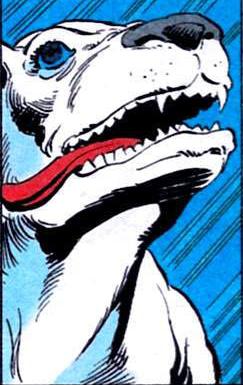
Rex the Wonder Dog is a fictional superhero dog in the DC Comics universe. Created in 1952 by Robert Kanigher of Wonder Woman fame and artist Alex Toth, Rex has sometimes been compared to Superman's dog Krypto, who was created three years later. While the two canine crime fighters do share some similarities, they are decidedly different.
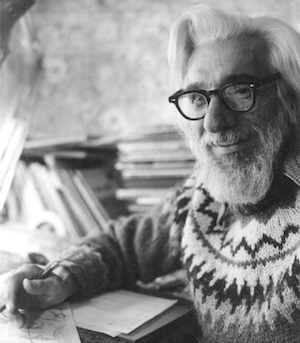
Vincenzo Francisco Gennaro Di Fago, known professionally as Vince Fago, was an American comic-book artist and writer who served as interim editor of Timely Comics, the Golden Age predecessor of Marvel Comics, during editor Stan Lee's World War II service.
Thunderbunny is a comic book about a boy who transforms into a superhero resembling a large pink humanoid rabbit. It was created by Martin L. Greim.

Comic Cavalcade was an anthology comic book published by DC Comics from 1942 to 1954.
Timmy the Timid Ghost is a fictional comic book ghost, whose adventures were published by Charlton Comics.

Neil the Horse is a comic book character created by Canadian cartoonist Katherine Collins in 1975. Neil is a happy, singing and dancing horse who likes bananas and milkshakes. Neil's adventures were syndicated in Canadian newspapers, published in a comic book series, and adapted for a radio musical.
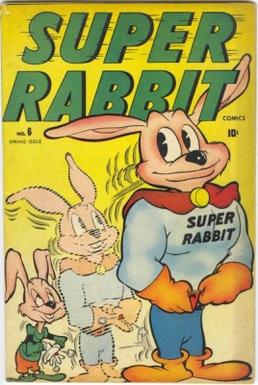
Super Rabbit is a talking animal superhero in american comic books published by Timely Comics, a predecessor of Marvel Comics, during the 1930s and 1940s period fans and historians call the Golden Age of comic books. Created by cartoonist Ernie Hart, he first appeared in Comedy Comics #14.
Dinky Duck is a Terrytoons cartoon character who first appeared in the 1939 animated short The Orphan Duck. Unlike fellow Terrytoons characters Mighty Mouse, silly Gandy Goose and the magpie duo Heckle and Jeckle, Dinky never became popular, appearing in a total of only 15 cartoons between 1939 and 1957.
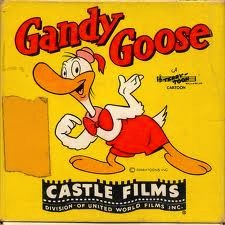
Gandy Goose is a Terrytoons cartoon character who first appeared in the 1938 short Gandy the Goose. He is frequently paired with Sourpuss, a cat, beginning in the 1939 short Hook Link and Sinker. Sourpuss' first appearance was in the 1939 The Owl and the Pussycat, and had appearances without Gandy in the shorts How Wet Was My Ocean (1940), Fishing Made Easy (1941), and A Torrid Toreador (1942). Originally voiced by composer and orchestral arranger Arthur Kay from 1939 to 1941, Gandy spoke in a lyrical vocal parody of radio comedian Ed Wynn while Sourpuss vocally impersonated an impatient Jimmy Durante. Their surreal adventures often showcase extended dreams, bookended by coarse bedroom arguments.
Buster Bunny is a fictional character who had appeared in comic books from Standard Comics starting in 1949; this character is not related to the character of the same name from Tiny Toon Adventures.

Space Adventures is an American science-fiction anthology comic book series that was published sporadically by Charlton Comics from 1952 to 1979. Its initial iteration included some of the earliest work of industry notables Steve Ditko, Dick Giordano, and Tony Tallarico, and at least one story by EC Comics mainstay Bernard Krigstein.
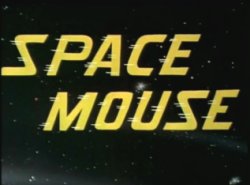
The first Space Mouse is a comic book character published from 1953 to around 1956 by Avon Publications. Space Mouse is also the name of a 1959 Universal Studios cartoon featuring two mice and a cat named Hickory, Dickory, and Doc. A second Space Mouse character was published by Dell Comics from 1960 to around 1965. The Dell Comics version was also featured in a 1960 cartoon produced by Walter Lantz, entitled The Secret Weapon.
Superkatt is an American cartoon animal comic book series by Dan Gordon, a jab at the “long-underwear” genre of superhero comics. The series stars Superkatt, an anthropomorphic cat who wears a bowtie, bonnet, and diaper as a superhero costume. Ron Goulart, author of Ron Goulart's Great History of Comic Books, said that Superkatt was Dang's most memorable comic book character. Denis Gifford, author of The International Book of Comics, said that the character "was as silly as his supercostume."














